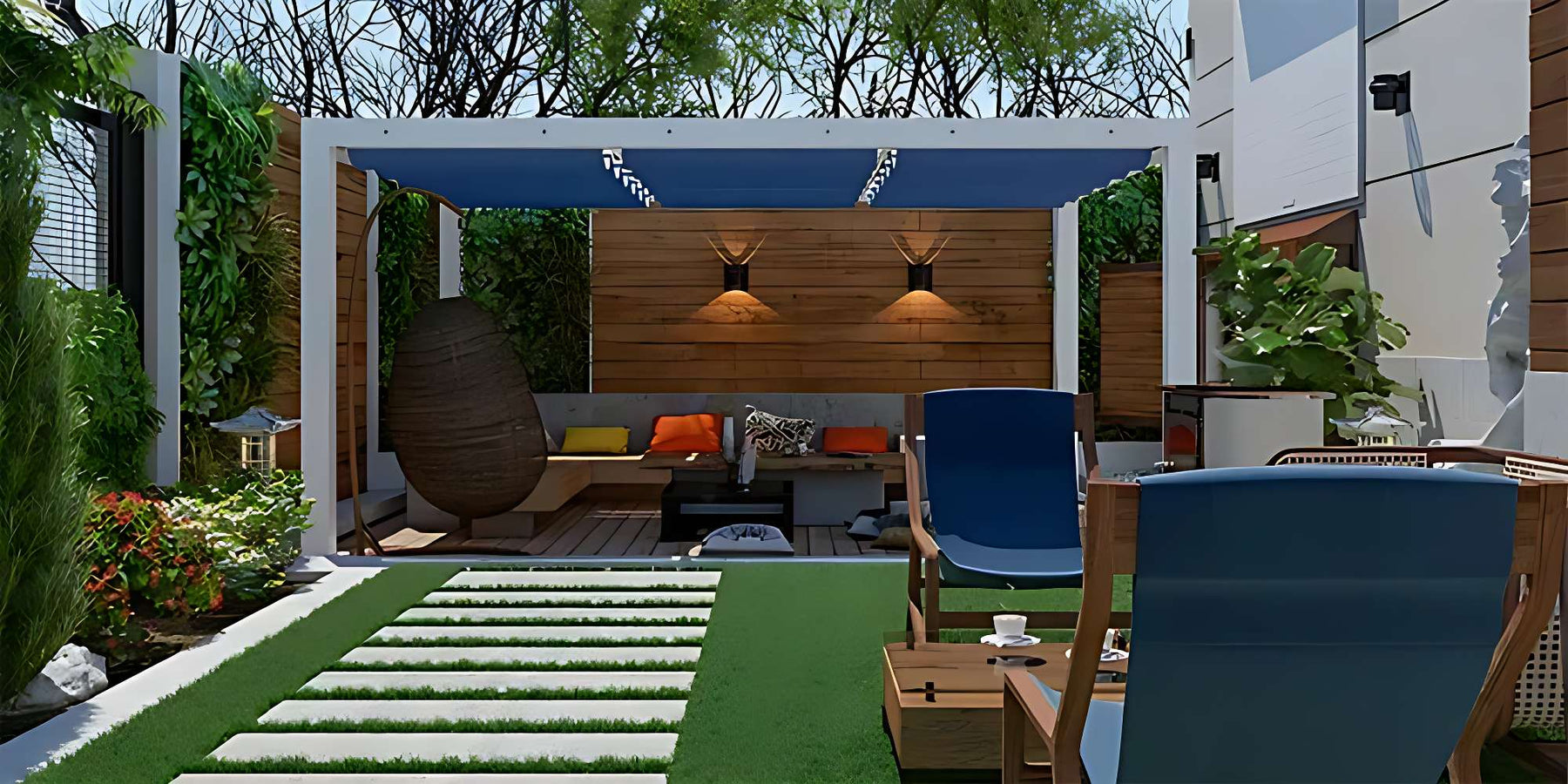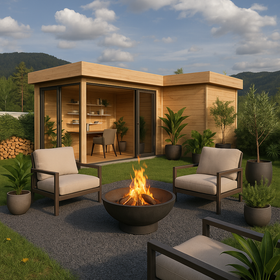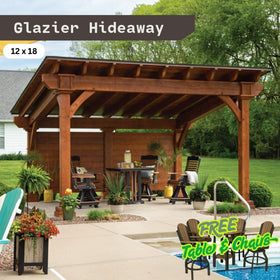512-777-0154

The Best Plants to Grow Around Your Pergola
You’ve built the structure in your patio. The posts are solid. The slats are casting just the right amount of shade. But now it feels a little bare.
That’s the thing about pergolas. They’re only halfway to being finished when they go up. What really brings them to life is what grows around them and your outdoor furniture.
Plants don’t just soften the wood and fill the gaps. They shape the space. They add scent, color, beauty, shade, privacy, or all of the above if you pick the right ones.
But not every plant is up for the job. Some need too much babying. Others grow fast and take over everything in sight. And then there are the ones that look great but drop petals like confetti for weeks.
So what should you grow?
Before You Buy, Ask Yourself These 3 Quick Questions
Not all plants like hydrangea play nice with every pergola. Some need full sun. Others prefer a bit of shade. And then there’s the question of how much time you actually want to spend pruning things back.
Before you pick a single plant or tree, ask yourself these:
- How much sun does this area get? Morning shade? Full afternoon sun? This matters more than you think. Some plants love heat. Others will burn out fast.
- What do you actually want from your plants? Shade? Privacy? Pops of color? A wall of scent when you’re having dinner outside? You don’t need to pick just one, but it helps to know your top priority.
- How much work are you willing to put in? Some vines grow fast and need regular trims. Others take their sweet time but barely ask for anything. Be honest about how hands-on you want to be.
Related: How to Decorate a Pergola?
7 Plant Types That Elevate Any Pergola
Not every plant deserves a front-row seat in your backyard and Structureworks Balance Trex Pergola. But these seven? They hold their own. Whether you want shade, scent, or something bold enough to steal attention from the fence, this list covers it.
Each one brings something different to the table, such as color, privacy, pollinators, or just a little green drama.
1. Wisteria

Wisteria hangs in long, purple clusters and turns heads whether you want it to or not.
If you want your Brookside Timber Frame Zion Resort Pergola to become the focal point of your garden design, this flowering plant gets it done. Just make sure you’re ready for commitment. It grows fast, twines tightly, and needs a strong structure to lean on.
Give it full sunlight and decent drainage, and it’ll reward you with blooms every spring. The canopy it creates helps with shade, too, especially in hotter climates. But it does need regular pruning or it’ll go rogue.
2. Climbing Roses

Climbing roses bring softness and structure. That rare mix of rugged stems and delicate petals makes them great for any landscape.
They look high-maintenance, but many varieties are surprisingly laid-back. As long as you give them good soil, plenty of sunlight, and regular trimming, they’ll stay happy.
Go for repeat bloomers if you want more than just one flush of flowers. And if a privacy wall is on your list, thorny types do double duty by keeping curious hands away.
They don’t mind fences, trellises, or arches. Bonus, they attract a pollinator like a bee and butterfly, and most varieties smell better than anything you’d buy in a bottle.
3. Jasmine

Jasmine is subtle during the day and fully steps into the spotlight in the evening. And the scent is hard to beat once it gets going.
Both star jasmine and confederate jasmine work well in a backyard Structureworks Reverie Fiberglass Pergola. They’re evergreen in warmer climates, so you’re not left staring at bare stems in winter. And they don’t take over your lawn or garden.
Jasmine thrives in full to partial sunlight. It doesn’t mind containers either, which gives you options. Not too picky about soil pH. Just don’t let the root system sit in standing rain or soggy ground.
4. Grape Vines

If you want greenery with benefits, grape vines and Brookside Timber Frame Highlans Oasis Pergola are the perfect match.
They cover a pergola quickly, create solid shade, and give you a seasonal bonus: real fruit. You’ll need to prune them once a year to keep their shape, but that’s a fair trade.
They grow best in full sun and like well-drained soil with decent airflow. Pick a variety suited to your climate; some handle heat better than others.
In summer, they’re lush and green. In fall, they shift to golden yellow. That seasonal change makes your backyard feel alive. Plus, grapevines help attract birds and bees without inviting pests.
5. Honeysuckle

Honeysuckle doesn’t demand much, but it still shows up. The flowers are tubular, fragrant, and come in warm tones that look great against neutral fences or the natural wood of Outdoor Living Today Western Red Cedar Pergola & Canopy.
It’s fast-growing, which helps fill in a space quickly. But it’s not a garden bully, especially if you stick to non-invasive species.
Plant it near the base of your pergola and let it climb. It does well in most soil types and handles rain and heat like a pro. Also? Bees, butterflies, and hummingbirds love it.
6. Clematis

Clematis is one of the most versatile flowering plants you can grow with your Structureworks Solare Fiberglass Pergola. There are hundreds of species and hybrids, which means you can find one to match almost any garden design. Some bloom early, some late, some twice a year.
The vines aren’t too heavy, so they work on lightweight structures. They also pair well with roses or honeysuckle for a layered look.
Clematis likes sunlight on its top and shade around its roots. You can tuck a small plant at the base to help with that. They like moist, well-draining soil and appreciate a bit of compost now and then.
7. Passionflower

Passionflower doesn’t look like anything else. Its blooms are layered and strange in the best way.
It thrives in warm climates and needs full sunlight to do its thing. The vines are fast-growing and can easily cover a Structureworks Trex Pergola if given room. Just make sure your support is sturdy.
The flowers attract bees and butterflies, and in some varieties, you’ll even get edible fruit.
Passionflower likes slightly acidic soil and steady watering. It’s not fussy about the landscape around it as long as it gets enough sun.
Here are 3 Plants That Work Around the Base
Not every plant needs to climb to earn its spot. Some do just fine staying low, adding texture and color around the base of your pergola.
These plants help soften hard edges, fill in gaps, and make everything feel more grounded. They're great for layering, especially if you’re working with a porch, an arch, or a fence in the background. None of these requires a trellis. Just solid ground cover and clean, reliable aesthetics.
1. Ferns or Hostas (for shady bases)

If your Structureworks Shadow Trex Pergola leans toward the shady side, ferns and hostas are a safe bet. They don’t need much sunlight and thrive in cooler, moist conditions. The leaf texture alone makes them worth it: wide, wavy, or feathered, depending on the species.
Hostas come in lots of green shades, and ferns give that cottage garden feel without much fuss. Just keep the soil rich and well-mulched, maybe toss in some compost now and then.
2. Lavender or Sage (for sunny spots)

These are solid options for warmer climates and full sun areas. Both are drought-tolerant and don’t mind less-than-perfect soil. Plus, they smell good and bring in bees and other pollinators.
Sage adds a soft, silvery tone. Lavender leans purple and works well in containers near outdoor seating areas. Keep them trimmed, and you’ll get a longer bloom period.
3. Ornamental Grasses

These work well near modern structures or clean-lined Structureworks Solis Trex Pergola. They sway in the breeze, which adds a little movement to the space. You can grow them from seed or pick up small clumps from your local nursery.
Most grasses adapt to a wide range of hardiness zones. Use mulch as groundcover to keep weeds down and moisture in. Easy to grow, hard to mess up. Also pairs well with wine and a quiet afternoon.
The Easiest Pergola Pairings for Low-Maintenance Gardening
If your idea of plant care is watering whatever looks thirsty, this part’s for you. These vines and shrubs don’t ask for much. A bit of sun, the right spot, and they’ll do the rest.
Set them up with self-watering containers or drip irrigation if you want to take the hands-off approach a step further. Here are a few that won’t punish you for forgetting:
- Bougainvillea: Bright, tough, and made for heat. This flowering vine thrives in poor soil and doesn’t mind being ignored. It climbs fast and adds instant color to any outdoor space. Just give it full sun and some room near the roof or fence.
- Trumpet Vine: Grows fast, fills space, and brings in bees and hummingbirds. It’s one of those “plant it and let it do its thing” varieties. Prune once a year, and it’ll behave. Works well in warmer climates and doesn’t fuss about soil quality.
- Berry-producing shrubs (like blueberry or orange-toned varieties): These stay lower to the ground but still earn their keep. Some double as small-space hedges, others add edible appeal. Most types prefer full sun and simple care; just keep the soil slightly acidic.
A Few Tips to Help Your Pergola Plants Thrive
- Pick the right trellis or support. Lightweight vines like jasmine or clematis don’t need much. Heavier growers like bougainvillea need something stronger. Make sure your Structureworks Stratus Aluminum Pergola can hold the weight before things take off.
- Start small. It’s easy to overplant. But even one or two vines can fill a space quickly. Give them room. Most grow faster than you think.
- Go easy on the mix-and-match. Avoid planting multiple aggressive growers together. Wisteria and trumpet vine in the same spot? That’s asking for a garden tug-of-war.
- Use soft ties or zip ties. Early training makes a difference. Guide the stems where you want them while they’re still flexible.
- Watch the sun. Know your sun-to-shade ratio. Most flowering vines want full sun, but a few evergreen types prefer some relief during hot afternoons.
- Water smarter. Deep watering works better than frequent shallow sips. Add mulch to help keep moisture in and the roots cool.
Ready to Start Planting? Start Small, Grow Bold
Plants don’t just fill space around a pergola. They shape it. They set the tone. A few simple choices can make your space feel romantic, rustic, modern, or completely wild.
Whether you’re after soft shade, bold color, or just something green that won’t die in a week, there’s a plant for it. You don’t need to overhaul your entire garden. Start small. Let it grow from there.
If you're still figuring out how to bring it all together, we’ve got options. Our pergolas and raised garden beds are built to work with real spaces and real plants. Try one thing. See how it looks. Then add more when you’re ready. That’s how great gardens usually start.






